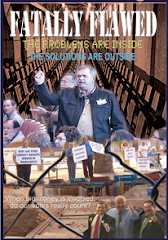Posted on Jul 15, 2009
Truthdig
It’s the silent education crisis, the one we don’t talk about much because its existence undermines the story we like to tell about our country.
The problems we face from kindergarten to 12th grade get regular, if still insufficient, attention. But we rarely confront how badly we’re faring when it comes to educating our people after high school. That silent education crisis belies our claim that no nation comes close to us in guaranteeing that anyone can work hard, get a great education, and soar.
Judge Sonia Sotomayor honored this national article of faith in a lovely tribute to her mother at her confirmation hearings. “She taught us that the key to success in America is a good education,” Sotomayor said. “And she set the example, studying alongside my brother and me at our kitchen table so that she could become a registered nurse.”
In telling this story of intergenerational mobility, Sotomayor was describing how our education system is supposed to work—and, inadvertently perhaps, pointed to how it’s failing so many now.
College and law school got Sotomayor to where she was this week, and we once did reasonably well in opening educational opportunities to people from modest backgrounds such as hers.
In 1976, the year Sotomayor graduated from Princeton, federal Pell Grants for low-income students covered 72 percent of the average cost of a four-year state institution. An excellent education (if not necessarily at Princeton) was, in principle, within reach of most Americans. But by 2003, Pell Grants covered only 38 percent of the cost of attending a state university.
Her mother’s quest to better her own and her family’s lot through more schooling was also classic, and we’re falling behind when it comes to opportunities of that sort, too.
Today, the United States stands 10th in the percentage of 25- to 34-year-olds who have earned a postsecondary degree. We’re behind Canada, Japan, South Korea, New Zealand, Belgium, Ireland, Norway, Denmark and FranceThe information I’ve just offered comes from an important article by Andrew Delbanco, a professor at Columbia University, published this spring in The New York Review of Books. Delbanco concludes that “a great many gifted and motivated young people are excluded from college for no other reason than their inability to pay, and we have failed seriously to confront the problem.”
To bolster his point, Delbanco cites the remarkable finding of Donald E. Heller, the director of Penn State’s Center for the Study of Higher Education, that “the college-going rates of the highest-socioeconomic-status students with the lowest achievement levels is the same level as the poorest students with the highest achievement levels.” I added the italics to underscore the not-so-hidden injuries of class.To read Delbanco’s article and hear Sotomayor’s personal story is to understand why President Obama went to Michigan on Tuesday to announce a plan to spend $12 billion over 10 years to strengthen our community colleges and “help an additional 5 million Americans earn degrees and certificates in the next decade.”
It was good to hear a president say that community colleges are “an undervalued asset in our country ... treated like the stepchild of the higher education system.” He was also correct to emphasize how much upward mobility still depends on education, since “jobs requiring at least an associate degree are projected to grow twice as fast as jobs requiring no college experience.”But his proposal should be seen only as a first step. It’s a $1.2 billion annual down payment to solve an enormous problem. The community colleges are in crisis because they are being flooded with students who cannot afford four-year schools, and also with unemployed workers seeking training for new jobs.
Moreover, many Americans will find secure and well-paying employment not by way of a college degree but by receiving training after high school for what economists Harry Holzer and Robert Lerman call “middle-skill jobs.”In a report for The Workforce Alliance, Holzer and Lerman argued that both high-skill and service job openings will be outnumbered in coming years by middle-skill opportunities in health care, construction, installation, repair and many other fields. A single year of postsecondary education, especially in programs linked directly to employers’ needs, can do wonders in helping job seekers gain their footing on the mobility ladder.
Obama is on the right track. But we’ll need to do much more than he’s proposing if we want the story of Sonia Sotomayor and her mom to define a realistic aspiration for the next American generation
E.J. Dionne’s e-mail address is ejdionne(at)washpost.com.
© 2009, Washington Post Writers Group
















